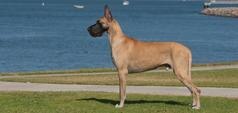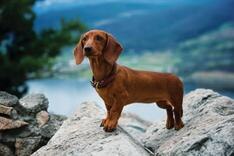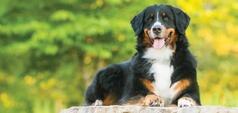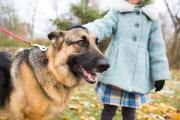
Dachshunds and Angular Limb Deformities: Prevalence, Diagnosis, and Treatment

Breeders and owners of Dachshunds are likely familiar with terms such as bowlegged syndrome, angular hock deformity, easty-westy feet, and Queen Anne fronts. These terms describe angular limb deformities (ALDs) that can potentially cause debilitating effects on the dog's legs during growth. These inherited developmental abnormalities lead to misalignment of bones in the legs, resulting in joint incongruity and often causing painful lameness.
Despite being recognized for over four decades, ALDs still perplex breeders and owners when they observe their prized puppies' legs and feet turning inward or outward. These typically lively and energetic puppies often face difficulties in walking, occasionally dragging their feet or hopping along.
Dachshunds selected for breeding programs, including those intended for dog shows, field trials, or companion sports, sometimes end up in pet homes. However, since the mode of inheritance for these conditions remains unknown, breeders may unknowingly contribute to the prevalence of ALDs within the breed.
ALDs affecting the rear legs are pes varus, which is Latin for “foot inward,” an apt description of the bowlegged syndrome or angular hock deformity, and pes valgus, meaning “foot outward” in Latin and describing the easty-westy appearance. Similarly, ALDs affecting the front legs are carpal varus, Latin for “wrist inward,” and carpal valgus, Latin for ”wrist outward,” also known as a Queen Anne front or easty-westy. These conditions can be unilateral, occurring in one leg, or bilateral, seen in both legs.
ALDs can be diagnosed in Dachshunds of all coat colours and size varieties. There is anecdotal evidence suggesting that these orthopedic disorders are becoming more prevalent within the breed.
Deneice “Denny” Van Hook, DVM, president of the Dachshund Club of America Health & Welfare Trust Fund, says, “ALDs are cropping up in bloodlines you would not expect to see them in. Because the conditions are not apparent at 8 weeks of age, they are not recognized early and often puppies have been placed in homes before being diagnosed.”
Timely detection and treatment of ALDs play a crucial role in improving long-term health outcomes. Mild-to-moderate cases can often be managed through medical interventions such as supplementation, appropriate nutrition, and weight management. However, severe cases may necessitate surgical intervention. The cost of surgery can vary depending on the geographical location and specialty clinic, with an average of around $5,000 per leg for correcting a pes varus deformity.
“Surgical correction for ALDs should be considered with dogs having clinical signs of lameness and pain,” says Bryan Torres, DVM, PhD, DACVS-SA, DACVSMR, associate professor of veterinary orthopedic surgery at the University of Missouri. “The key with these dwarf breeds is to identify what is ‘expected’ versus what is ‘excessive’ in regard to changes in the bones and limbs.”
Dachshunds and other chondrodysplastic or dwarf breeds, such as Basset Hounds, Pembroke and Cardigan Welsh Corgis, have a genetic predisposition for developing ALDs. Notably, ALDs also occur from growth plate injuries or trauma, though this is seldom the case with Dachshunds.
“ALDs in Dachshunds are associated with chondrodysplasia,” says Danika Bannasch, DVM, PhD, the Maxine Adler Endowed Chair of Genetics at the University of California-Davis. “An FGF4 retrogene insertion on canine chromosome 18 explains the short-legged phenotype known as chondrodysplasia, which contributes to orthopedic disorders such as ALDs by causing the stunted growth of certain bones.”
The FGF4-18 retrogene insertion discovery was made in 2009 by researchers at the National Institutes of Health who were studying breed sizes and morphology.1 A retrogene results from the retrotransposition of messenger RNA (mRNA). All cells have an RNA molecule that transcribes the DNA from the cell’s nucleus to the cytoplasm, or ribosomes, where it is synthesized into protein.
“Other factors besides having chondrodysplasia are likely to be contributing to the ALDs’ phenotype,” says Dr. Bannasch, who discovered the FGF4-12 retrogene insertion linked to the causative variant of the chondrodystrophy phenotype.2 “We do know that chondrodysplasia is associated with carpal valgus, while chondrodystrophy is not. How these two retrogenes may work together to exacerbate proper bone development leading to ALDs is unknown. Since most Dachshunds have two copies of both retrogenes, there may be additional genetic or environmental factors involved.”
Advising breeders on how to avoid producing dogs with an ALD can’t be done. “Until more is known about the genetics behind each of the ALDs affecting Dachshunds, it is impossible to provide sure recommendations to breeders,” Dr. Bannasch says.
Pes varus is the most common ALD seen in Dachshunds, according to Dr. Torres.
The bowlegged appearance in dogs with pes varus is typically the initial visible sign of the condition. It arises when the growth plate of the distal tibia (shinbone) closes prematurely, leading to uneven growth and an inward angulation (varus) of the distal tibia. As a result, the affected leg appears bowlegged because the distal portion of the tibia is not level with the ground, while the lateral side is.
Pes varus usually occurs in Dachshunds between 4 and 6 months of age and ranges from mild to severe. Those with a mild case may show no clinical signs, though the younger the age at which the growth plate closes, the more severe the deformity.
“Patients that have lameness typically need surgery to straighten the leg and to help get the loading of the joint as close to normal as possible,” says Dr. Torres. “Without treatment, dogs can develop arthritis in affected joints as they age. On the other hand, mildly and some moderately affected dogs adapt well with seemingly no pain or limitation in their ability to get around.”
Surgery to correct pes varus is an opening-wedge osteotomy. “We essentially make a cut in the bone, straighten out the bone and put either a bone plate on the inside of the tibia or use an external skeletal fixator to stabilize the bone,” explains Dr. Torres. “As the bone is straightened, a pie-shaped wedge is created and in some cases, a bone graft is used to help encourage and speed bone healing.
The encouraging news is that once the surgeries are completed and the dog is on the mend, the outlook for his being able to participate in normal activities is good.
1 Parker HG, VonHoldt BM, Quignon P, et al. An Expressed FGF4 Retrogene Is Associated with Breed-Defining Chondrodysplasia in Domestic Dogs. Science. 2009;325:995-998.
2 Brown EA, Dickinson PJ, Mansour T, et al. FGF4 Retrogene on CFA12 Is Responsible for Chondrodystrophy and Intervertebral Disc Disease in Dogs. PNAS. 2017;114(43): 11476-11481.
Purina® Pro Plan® is the #1 brand most fed and recommended brand by dog breeders in Canada.* Learn more about the what the Pro Club Breeder program has to offer, including up to 25% savings on Pro Plan dog and puppy food, a free bag of puppy food for your new pet owners and more!
*Canadian Dog Fancier survey results, November 2023
Related articles


